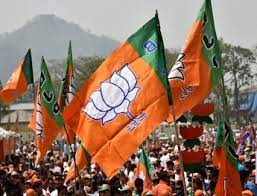NEW DELHI: Sudden as it was, Manohar Lal Khattar’s replacement as the Haryana Chief Minister ahead of the Assembly elections due later this year was not surprising.
The ground for the switch was being laid silently to ward off anti-incumbency against a CM who had been in the saddle since 2014. That explains the BJP’s replication in Haryana of a script tried and tested in other states.
It began with the shock September 2021 resignation of then Gujarat Chief Minister Vijay Rupani, who made way for first-time MLA Bhupendra Patel in the CMO a year ahead of the 2022 Gujarat elections. Rupani and his entire Cabinet was dropped, fresh blood inducted and a new line of leadership created nearly overnight. A year later, the BJP won Gujarat for the seventh time, bagging a historic four-fifth mandate.
In Karnataka, the saffron party had secured the resignation of the powerful Chief Minister BS Yediyurappa in July 2021, installing Basvaraj Bommai before the state polls in 2023. The gamble did not pay off and the BJP quickly course-corrected by naming Yediyurappa’s son as the state unit chief. In Uttarakhand, then Chief Minister Trivendra Singh Rawat was replaced with Tirath Singh Rawat in March 2021 and Tirath Rawat with Pushkar Dhami in July 2021. The strategy paid off and the BJP retained Uttarakhand in 2022, becoming the first party to be voted back to power in the hill state.
Biplab Kumar Deb was likewise ousted as the Tripura CM ahead of the 2023 state polls, with then state BJP president Manik Saha replacing him. This even as Deb had become the CM unseating a 25-year-old Left government in Tripura. The switch helped the BJP keep Tripura in 2023.
In Assam and Madhya Pradesh, the saffron party changed its sitting CMs after Assembly polls rather than before. The then Assam CM Sarbananda Sonowal made way for Himanta Biswa Sarma in May 2021 and Shivraj Singh Chouhan for Mohan Yadav in Madhya Pradesh in 2023.
“The idea behind replacements is infusion of fresh blood and vigour; creation of a new, younger line of leadership and premium to the party over individuals. Prime Minister Narendra Modi has always said the lotus (BJP symbol) is all that matters, not individuals. This approach breeds discipline, which explains the smoothness of chief ministerial transitions that otherwise look hard to achieve,” a BJP source said.
With first-time Lok Sabha MP Nayab Singh, an OBC, as Khattar’s replacement, the BJP also seeks to send a message of solidarity to the backward classes when the Congress has been pushing caste census as its principal Lok Sabha poll plank. “Haryana development is another example of how the BJP places more OBCs in power positions than any other party. In the 77-member Modi council of ministers, 27 ministers are OBCs, the highest-ever representation; 85 of our 303 Lok Sabha MPs are OBCs and 27 per cent of our 1,358 MLAs nationally are OBCs,” BJP sources said. Besides, Nayab (54) is much younger than Khattar (69), who is likely to get a central role.


